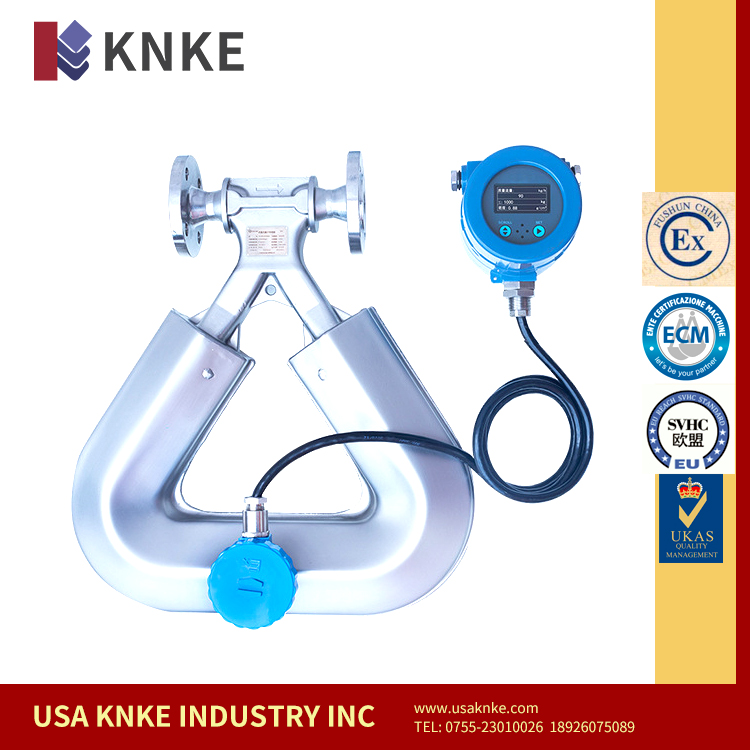Mass Flow Meter | Principle, Types, Applications & Selection Guide
In modern process industries, mass flow meters have become essential instruments for accurately measuring the mass flow rate of liquids and gases. Unlike volumetric flow meters, which measure the flow volume, mass flow meters provide direct measurement of mass flow, making them ideal for applications where density and temperature variations affect flow accuracy.
This article explains the working principle, main types, common applications, and key factors for selecting a mass flow meter, helping engineers achieve precise and reliable process control.
1. What Is a Mass Flow Meter?
A mass flow meter (also called a mass flow sensor or mass flow controller) is a device that directly measures the mass of a fluid passing through a pipeline per unit of time. The measurement is independent of temperature, pressure, or viscosity, ensuring stable and precise results.
Key Advantages:
- High accuracy (±0.1–0.5% typical)
- Direct mass measurement (no need for density compensation)
- Suitable for various fluids: liquids, gases, and steam
- Real-time data for automation and process optimization
2. Working Principle of Mass Flow Meters

There are two primary working principles used in mass flow meters:
(1) Coriolis Mass Flow Meter
The Coriolis effect principle is used to determine mass flow. When fluid passes through vibrating sensor tubes, it generates a phase shift proportional to the mass flow rate.
Features:
- Direct, highly accurate mass flow measurement
- Can measure density and temperature simultaneously
- Suitable for liquids, gases, and slurries
(2) Thermal Mass Flow Meter
This type uses heat transfer to measure flow. A heated element loses heat as fluid flows past it; the amount of heat loss correlates with mass flow rate.
Features:
- Ideal for measuring gases
- No moving parts → low maintenance
- Good for clean, dry gas applications (e.g., air, nitrogen, natural gas)
3. Main Types of Mass Flow Meters
Depending on technology and application, mass flow meters are classified into:
- Coriolis Mass Flow Meters – high precision for liquids and slurries
- Thermal Mass Flow Meters – best for gases in low to medium flow ranges
- Insertion Type Mass Flow Meters – cost-effective for large pipelines
- Micro Mass Flow Meters – used in laboratory and semiconductor industries
4. Applications of Mass Flow Meters
Mass flow meters are widely used in industries that require high-accuracy flow measurement and control:
- Oil & Gas Industry – crude oil, LNG, natural gas distribution
- Chemical and Petrochemical Plants – dosing and reaction control
- Food & Beverage – sugar syrup, milk, beer, and CO₂ measurement
- Pharmaceutical & Biotechnology – precise dosing and sterile processes
- Environmental Engineering – biogas and emission monitoring
- Semiconductor Manufacturing – ultra-low flow gas control
5. How to Select the Right Mass Flow Meter
When choosing a mass flow meter, consider the following factors:
- Fluid type – gas, liquid, or slurry
- Flow range and pressure – ensure meter capacity matches system flow rate
- Accuracy requirements – laboratory, industrial, or custody transfer
- Material compatibility – stainless steel, PTFE, or other corrosion-resistant materials
- Temperature and pressure conditions
- Installation environment – indoor, outdoor, hazardous areas (explosion-proof versions available)
- Output signals and communication – analog (4–20 mA), pulse, Modbus, HART, or Profibus
6. Installation and Maintenance Tips
- Install the mass flow meter in a stable, vibration-free section of the pipeline.
- Avoid air bubbles or multiphase flow, especially for Coriolis meters.
- Calibrate periodically according to manufacturer recommendations.
- Ensure proper grounding and shielding for accurate signal output.
- Keep the sensor clean to avoid fouling or clogging.
The mass flow meter is an indispensable instrument in modern industrial automation. Its ability to deliver precise, real-time mass flow data ensures efficient process control, energy savings, and product quality improvement.
By understanding the principles and selection criteria of different types of mass flow meters, engineers can choose the most suitable solution for their specific applications.
